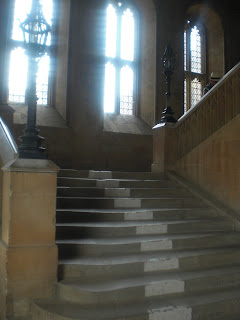My experience in the UK was rewarding and not at all what I expected. I did not think that this experience would be anything more than a vacation to London and the nearby areas. However, I actually learned how to recognize different identities and how to really observe and take in information about a location. Before this experience I simply went to a new place, looked around, and took a few pictures. Now, because of this trip, I really try to understand why something is the way it is and how it came to be this way. I have never been interested in history at all; it seemed irrelevant to my life and future. Now, though, I understand that the past really does effect us all; whether it be regarding our religion, family traditions, or the types of food we eat.
Over the course of my time in the UK I seemed to notice power and pride of place the most often. Britain is such a powerful union and has numerous ways of showing it. The British Museum, full of so many important artifacts from other countries, is a prime example of British power. The had the power and authority, in a sense, to take all of these things from other countries and not give them back. Even Windsor Castle had multiple guns and other weapons which were "borrowed" from other countries. The Queen and the Royal Family, although having no official power or ruling over what happens in the UK, certainly portray the sense of power because they are so highly regarded. When many think of the Queen the idea of power, strength, and majestic living comes to mind. The Queen is a symbol of power in the UK and is certainly treated in a manner of respect and honor.
Pride, an important aspect in many people's lives, is certainly evident within different parts of the UK. The Scottish were so proud of who they are, their history, and especially their traditions. Men wearing kilts was a common sight, something I assumed was more a thing of the past. Pubs were easy to find in Edinburgh, all of which were full of prideful and loud Scottish men. I loved the friendly hostility of the Scottish towards England; they often joked that Scotland is a whole lot better and needs to actually be out of the UK, separate from England. Scotland would like to be recognized as an independent nation whether than a part of the UK. Scotland has its own identities and wishes to be portrayed in that way, which definitely shows their pride of who they are!
I found that the British identity is hard to define and understand. I find it ironic and funny that the locals felt the same way as I did. There is not just one type of British person; not one certain way to talk, thing to eat, or tradition to follow. Britain, London specifically, is so diverse. There is cultural fusion everywhere you look. Whether it be the variety of ethnicities around or the varieties of food, fusion is evident. I feel like all of these different cultures play a role in making the British identity. Tying the East End into this thought, the Bangladeshi of Brick Lane have their own distinct culture, yet they contribute to British identity by bringing their religion and other cultural aspects into the area. Basically, British identity is not set in stone but rather a malleable, ever-changing characteristic.
This experience really opened my eyes to America, the ways of Americans, and myself as an American. I really took the time to ask the people from London what they thought of Americans and of any stereotypes. Most of the time I was told that Americans are thought to be greedy (that American Greed!), obese, and slow-paced. It's funny, but I completely agree! The American Greed definitely affects me in my day to day actions, especially in school. I take my schooling so serious because I want to graduate and score that high-paying job. I want to live the lavish lifestyle and be able to not stress about the small things in life. I can definitely see how obesity affects America because I taste the differences between the foods in America and England. The food in England tastes so much healthier, even the fast food! Overall I feel that this experience taught me that I really do not know much about American history. I feel that the people in the UK are so knowledgeable and prideful of their history and I am not at all like that. I would really like to learn more about American history. Not so much from a history book but hands-on, just like I got to learn about the UK.
If I get the chance to come back to the UK I would love to go to Ireland. I would really like to compare the English, Scottish, and Irish. I would also love to venture into more parts of England, especially Manchester. I would like to go into Buckingham Palace and see how beautiful it is inside. Specifically in London, I would love to go to the top of the Shard and see the view and compare it to the view from the London Eye. If I came back with my family I would love to show them all of the typical tourist spots, such as Westminster Abbey and the British Museum. My brothers would love the Tower of London and seeing all of the armor inside. My grandma would love the experience of having afternoon tea and snacks. Overall, I personally don't think my family would love London as much as I have.
































